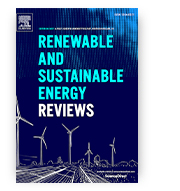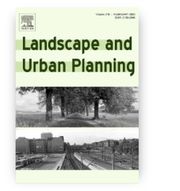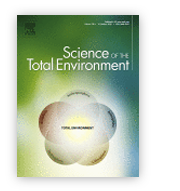
Research papers of the month – Feburary 2022
We present the highest-score research papers of February 2022. These papers have ben published in journals with the highest Ministerial score – 200 points.
The hydropower sector in Poland: Historical development and current status
Tomasz Kałuża, Mateusz Hämmerling, Paweł Zawadzki, Wojciech Czekała , Robert Kasperek, Mariusz Sojka, Marian Mokwa, Mariusz Ptak, Arkadiusz Szkudlarek, Mirosław Czechlowski, Jacek Dach
Renewable & Sustainable Energy Reviews
Ministerial score = 200.0
Journal Impact Factor (2020) = 14.982(Q1)
 The paper presents the historical overview and the current state of the hydropower sector in Poland. The history of Polish hydropower sector reaches over 120 years of tradition. The first power plants on Polish territory were built at the end of the 19th century. The development of the hydropower sector in Poland was irregular due to the First and Second World War. Moreover, the economic crisis of the 1970s was another factor affecting the development of the hydropower sector. After the political system change in 1989, favourable conditions for the development of the hydropower sector were created. Furthermore, the development of the hydropower sector was significantly affected by Poland's accession to the European Union. Currently in Poland there are 771 run-of -river hydropower plants of which 761 are small hydropower plants with installed capacity amounts below 10 MW. The total power of run of the river hydropower plants is 937 MW. The largest installed capacity is in the pumped storage hydropower plants, whose total installed capacity is 1433 MW. Poland ranks far in Europe in terms of installed capacity and production of electricity by hydropower plants. In recent years, the development of large hydropower plants has stopped mainly due to environmental and economic reasons. However, there is a constantly growing interest in small hydropower plants. The analyses show that the role of hydropower in stabilizing the power generation system in Poland is important. The hydropower plants provide a perfect answer for the development of other, unstable renewable energy sources.
The paper presents the historical overview and the current state of the hydropower sector in Poland. The history of Polish hydropower sector reaches over 120 years of tradition. The first power plants on Polish territory were built at the end of the 19th century. The development of the hydropower sector in Poland was irregular due to the First and Second World War. Moreover, the economic crisis of the 1970s was another factor affecting the development of the hydropower sector. After the political system change in 1989, favourable conditions for the development of the hydropower sector were created. Furthermore, the development of the hydropower sector was significantly affected by Poland's accession to the European Union. Currently in Poland there are 771 run-of -river hydropower plants of which 761 are small hydropower plants with installed capacity amounts below 10 MW. The total power of run of the river hydropower plants is 937 MW. The largest installed capacity is in the pumped storage hydropower plants, whose total installed capacity is 1433 MW. Poland ranks far in Europe in terms of installed capacity and production of electricity by hydropower plants. In recent years, the development of large hydropower plants has stopped mainly due to environmental and economic reasons. However, there is a constantly growing interest in small hydropower plants. The analyses show that the role of hydropower in stabilizing the power generation system in Poland is important. The hydropower plants provide a perfect answer for the development of other, unstable renewable energy sources.
DOI:10.1016/j.rser.2022.112150
The importance of seeking a win-win solution in shaping the vegetation of military heritage landscapes: The role of legibility, naturalness and user preference
Łukasz Pardela, Aleksandra Lis, Paweł Iwankowski, Agnieszka Wilkaniec, Markus Theile
Landscape and Urban Planning
Ministerial score = 200.0
Journal Impact Factor (2020) = 6.142(Q1)
 Vegetation in historic fortification areas is sometimes perceived mainly through the prism of the threat it poses to the historic structures. However, its presence can be socially desirable. Therefore, a question arises regarding how to shape military heritage landscapes in order to ensure their legibility and the optimal degree of naturalness. This study attempts to identify the nature of the relationship between the legibility and naturalness of military heritage landscapes (19th–20th century) in five European countries as well as the social preference for these landscapes, taking into account the complexity of these relationships (mediating effects). A more in-depth exploration may be helpful in determining the potential directions for contemporary shaping of the green areas of historic fortifications, taking into account social expectations and preference. This study examined the preference of 131 participants (age range 17–76 year; Mage = 38.3; SDage = 15.61) for 57 sites in terms of naturalness and legibility via participation in a questionnaire survey assessing reactions to naturalness, legibility and preference for three different maintenance categories of military heritage landscapes (‘well-kept’, ‘partly-wild’ and ‘wild’). Correlations between variables and mediating effects (suppressions) were analysed. A negative correlation was demonstrated between naturalness and legibility. Moreover, naturalness does not correlate with preference, which can be explained by the influence of legibility. The legibility correlates positively with preference, but this correlation would have been stronger were it not for the influence of naturalness. The outcome suggests that the most popular fortifications are maintained in a way that allows vegetation to appear, while at the same time at least partially preserving the legibility of the structures.
Vegetation in historic fortification areas is sometimes perceived mainly through the prism of the threat it poses to the historic structures. However, its presence can be socially desirable. Therefore, a question arises regarding how to shape military heritage landscapes in order to ensure their legibility and the optimal degree of naturalness. This study attempts to identify the nature of the relationship between the legibility and naturalness of military heritage landscapes (19th–20th century) in five European countries as well as the social preference for these landscapes, taking into account the complexity of these relationships (mediating effects). A more in-depth exploration may be helpful in determining the potential directions for contemporary shaping of the green areas of historic fortifications, taking into account social expectations and preference. This study examined the preference of 131 participants (age range 17–76 year; Mage = 38.3; SDage = 15.61) for 57 sites in terms of naturalness and legibility via participation in a questionnaire survey assessing reactions to naturalness, legibility and preference for three different maintenance categories of military heritage landscapes (‘well-kept’, ‘partly-wild’ and ‘wild’). Correlations between variables and mediating effects (suppressions) were analysed. A negative correlation was demonstrated between naturalness and legibility. Moreover, naturalness does not correlate with preference, which can be explained by the influence of legibility. The legibility correlates positively with preference, but this correlation would have been stronger were it not for the influence of naturalness. The outcome suggests that the most popular fortifications are maintained in a way that allows vegetation to appear, while at the same time at least partially preserving the legibility of the structures.
DOI:10.1016/j.landurbplan.2022.104377
Safer plant-based nanoparticles for combating antibiotic resistance in bacteria: A comprehensive review on its potential applications, recent advances, and future perspective
Uttpal Anand , M. Carpena, Monika Kowalska-Góralska, P. Garcia-Perez, Kumari Sunita, Elza Bontempi, Abhijit Dey, Miguel A. Prieto, Jarosław Proćków, Jesus Simal-Gandara
Science of the Total Environment
Ministerial score = 200.0
Journal Impact Factor (2020) = 7.963(Q1)
 Background Antibiotic resistance is one of the current threats to human health, forcing the use of drugs that are more noxious, costlier, and with low efficiency. There are several causes behind antibiotic resistance, including over-prescription of antibiotics in both humans and livestock. In this scenario, researchers are shifting to new alternatives to fight back this concerning situation. Scope and approach Nanoparticles have emerged as new tools that can be used to combat deadly bacterial infections directly or indirectly to overcome antibiotic resistance. Although nanoparticles are being used in the pharmaceutical industry, there is a constant concern about their toxicity toward human health because of the involvement of well-known toxic chemicals (i.e., sodium/potassium borohydride) making their use very risky for eukaryotic cells. Key findings and conclusions Multiple nanoparticle-based approaches to counter bacterial infections, providing crucial insight into the design of elements that play critical roles in the creation of antimicrobial nanotherapeutic drugs, are currently underway. In this context, plant-based nanoparticles will be less toxic than many other forms, which constitute promising candidates to avoid widespread damage to the microbiome associated with current practices. This article aims to review the actual knowledge on plant-based nanoparticle products for antibiotic resistance and the possible replacement of antibiotics to treat multidrug-resistant bacterial infections.
Background Antibiotic resistance is one of the current threats to human health, forcing the use of drugs that are more noxious, costlier, and with low efficiency. There are several causes behind antibiotic resistance, including over-prescription of antibiotics in both humans and livestock. In this scenario, researchers are shifting to new alternatives to fight back this concerning situation. Scope and approach Nanoparticles have emerged as new tools that can be used to combat deadly bacterial infections directly or indirectly to overcome antibiotic resistance. Although nanoparticles are being used in the pharmaceutical industry, there is a constant concern about their toxicity toward human health because of the involvement of well-known toxic chemicals (i.e., sodium/potassium borohydride) making their use very risky for eukaryotic cells. Key findings and conclusions Multiple nanoparticle-based approaches to counter bacterial infections, providing crucial insight into the design of elements that play critical roles in the creation of antimicrobial nanotherapeutic drugs, are currently underway. In this context, plant-based nanoparticles will be less toxic than many other forms, which constitute promising candidates to avoid widespread damage to the microbiome associated with current practices. This article aims to review the actual knowledge on plant-based nanoparticle products for antibiotic resistance and the possible replacement of antibiotics to treat multidrug-resistant bacterial infections.
DOI:10.1016/j.scitotenv.2022.153472










